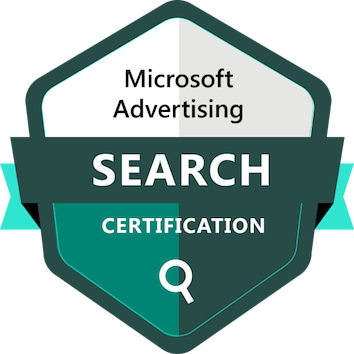Meta descriptions is a commonly misunderstood component of SEO. Many believe that they are a ranking factor or choose to overlook them entirely when creating content. Perfecting this artform can persuade potential clients to visit your website, even if it isn’t a direct ranking factor.
What are meta descriptions?
A meta description is an HTML tag that summarizes the content on a web page. Included at the top of the page’s source code, along with the page title and occasionally structured data, forms what is known as a ‘snippet.’ They present themselves underneath the page title on a search engine results page (SERP).
Ideally, a description will indicate to searchers what kind of content they can expect to find if they click through, increasing your chance of creating a new lead.

When you use the tag, the content in a meta description is not visible on the page itself.
When a meta description is unavailable, a search engine often selects text from the page in question. While Google is making its best guess as to what the meta description should be, it’s not ideal because most web pages’ content is generally not summarized in a way that encourages searcher engagement.
Meta Descriptions don’t always show.
So, search engines will take the initiative regarding your meta descriptions and replace them with what they feel is more relevant to the content on the page, even when the tag is populated. It is often text taken directly from the page content. According to ahrefs, 62.7% of original meta description tags on Google are not displayed as the writer intended.
If Google rewrites meta descriptions, why should I bother?
Well-researched, relevant, and compelling text is still a great way to increase your click-through rate, despite only a third being shown in their entirety. If your website has many sections, it is probably a good idea to focus on pages with a higher conversion rate, were built to rank highly, or are more likely to be shared on social media.
How to Write Meta Descriptions
Structure is crucial to how searchers decide what content is best for them. If you want potential clients to make the next step, try following these meta description best practices.
Use Active Voice
Using active voice is more impactful and personable. For those who are not grammatically minded, this is where the sentence’s subject performs the action. Ask yourself, what do you want the searcher to do?
Include a Call-to-action
A call-to-action pairs nicely with the use of active voice. Think about phrases such as ‘learn more,’ ‘check this out,’ or ‘discover’. You want to write a description that conveys your website’s unique selling point, and these CTA’s give the searcher a reason to continue their journey with you, not a competitor.
How long should a meta description be?
It’s best practice to keep the meta description to 155 characters, so Google doesn’t truncate the meta description. Often a call to action can disappear if it isn’t within the character parameters. Google uses pixel width, not individual letters, to determine how long meta descriptions should be. Each letter has a different pixel width, so character length can vary a fraction.
Avoid unnecessary symbols or punctuation, as additional hyphens, quotations, and parenthesis will take up precious character space.
Try to Match search intent
Approximately 8.5 billion searches are conducted daily on Google alone—many of these in the form of a search query or question. The goal for businesses is to match searcher intent with a satisfactory answer that will get them noticed on SERPs
Google’s primary goal is to aid user experience by providing them with the most relevant results for their search queries. As their business model depends on it, descriptions can satisfy this need by preempting possible questions with relevant and helpful solutions.
Using Keywords aids searcher intent
Keywords signal to search engines that you are accurately describing your page’s content. Occasionally, Google may highlight in bold relevant prima keywords, which gives you another boost towards user engagement. This is where keyword research becomes essential—identifying your potential customers’ search queries.
Here are some keyword best practices
- Front-end important keywords.
- Refrain from keyword stuffing.
- Include relevant long-tail keywords.
Benefits of Writing Good Meta Descriptions
Businesses should endeavor to write unique descriptions across all pages and refrain from using the same description repeatedly. Duplicate and unhelpful descriptions can also be quickly identified by search engines and summarily removed.
Increased Click-through rate
As alluded to earlier, the primary benefit is how it impacts a business’s organic traffic and click-through rate. This, in turn, may positively impact a page’s search engine optimization and ability to rank more highly in SERPs. By taking time to write unique, eye-catching, enticing copy for all your important pages, you send a strong signal to search engines and potential customers that you have the product or service that meets their requirements.
No Direct Benefit to SEO
While they have some tangential benefits for SEO, such as brand exposure, increased click-through rate, and differentiating your content from competitors, meta descriptions are not a direct SEO ranking factor.
Increased conversions for e-commerce sites
A well-written meta description is especially beneficial to e-commerce sites as they improve click-through rates and display what customers will receive by purchasing with you over competitors. Adding perks such as free shipping or discounted rates increases potential buyers’ chances of being noticed.
Using keyword research and implementing these phrases in your description helps companies identify customer pain points, increase search traffic and uncover preferences. Avoid using clickbait descriptions, as this will increase your bounce rate.
Programmatically generate meta descriptions
Generating unique descriptions takes minimal effort for smaller sites or sites where each page has unique attributes. However, for e-commerce sites with large databases, preparing individual entries for every page can be laborious and tricky to differentiate.
In the latter case, programmatic generation of the descriptions can be appropriate. Search engines like Google do not penalize this practice. In fact, they actively encourage it, so long as the program you are using writes in a ‘human’ way.
We hope this has helped you take advantage of meta descriptions and write them to achieve maximum click-through rate and exposure to your products or services. The best thing to do is start practicing and keep an eye on your analytics to see if these tips help!






